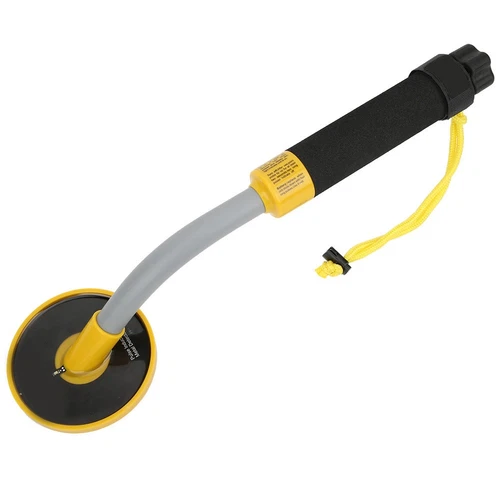How do Metal Detectors work?
Metal detectors are tools designed to locate hidden metal objects beneath the ground, inside walls, or even in luggage. But how exactly do they work?
In this blog, we will break down the science behind metal detectors , the types of metal they detect and what factors can influence their performance. We hope this can help you understand how to get the most out of them.
What is a Metal Detector?

A metal detector is an electronic device that identifies the presence of metal nearby. It does this by emitting electromagnetic fields and detecting the response of metal objects. They come in a range of sizes and are used for many different purposes such as:
- Treasure hunting
- Security screening
- Archaeological digs
- Industrial quality control
How do Metal Detectors work?
- Transmitting Electromagnetic Fields - The search coil in the detector sends out a magnetic field into the ground or surrounding area.
- Interaction with Metal Objects - When the magnetic field hits a metallic object, it induces tiny electric currents in the object called eddy currents.
- Receiving the Response - These eddy currents produce their own magnetic field, which the detector's coil pick up.
- Alerting the User - The metal detector processes the signal and alerts the user indicating that metal is present.
What types of Metal can Metal Detectors detect?
-
Ferrous Metals
- Magnetic.
- Easily Detectable.
- e.g. steel and cast iron
- Non-Ferrous Metals
- Not magnetic but conductive.
- Still detectable due to their ability to carry electric currents.
- e.g. aluminium, copper and brass
What affects a Metal Detector's Performance?
There are many factors that determine how well a metal detector can detect an object:
- Size of Object - Larger objects are easier to detect.
- Depth - Most detectors have limited detection depth.
- Material composition - Some metals are harder to detect.
- Soil conditions - Wet or mineral rich soil can interfere with signals.
- Detector type and sensitivity - Higher end detectors can enhance accuracy
What types of Metal Detectors are there?
Very Low Frequency (VLF)

The most common type of metal detector. This detector uses two coils:
- One transmits electromagnetic signals into the ground.
- The other detects changes and sends the signal to the control box.
This is the simplest form of metal detector, best for beginners and can sometimes be as cheap as £50 but this can rise up to £1000.
Pulse Induction (PI)

PI systems often use a single coil that acts as both a transmitter and receiver. Instead of emitting a continuous signal, PI detectors send quick, powerful pulses of electrical current into the ground. This is ideal for deep searching and finding larger objects They are typically used by advanced users and professionals.
They tend to be similar price to VLF, starting at £100 with professional models exceeding £1000.
Multi-Frequency Metal Detectors

These are the most versatile and technologically advanced. The detector transmits multiple frequencies at once, or allows the user to switch between them. This allows them to detect a variety of different metal types and sizes. This is perfect for users who require versatility across different terrains.
Multi frequency detectors are at the premium end with prices starting at around £700.
Need Metal for Testing or Projects?
At London Metal Store, we supply a wide range of ferrous and non-ferrous metals perfect for testing, building, or learning more about how metal detectors work. Our stock includes:
Visit our online store here or get in touch for advice on choosing the right materials for your next project.
